MINUSTAH’s Cholera Kleptocracy Prepares to Stay in Haiti | Cleptocracia do Cólera da MINUSTAH Prepara-se Para Ficar no Haiti
By Dady Chery
Haiti Chery | News Junkie Post | Murilo Otavio Rodrigues Paes Leme (Portuguese)
The great majority of Haitians categorically reject the occupying United Nations force called MINUSTAH, and Haiti’s Senate passed a resolution in September 2011 that called for withdrawal of these troops by October 2012. Nevertheless, the groundwork has been laid for the UN mandate to be renewed. With a budget of more than half a billion dollars ($676.70 million) at stake, the disregard for democracy is total. The UN Security Council will announce its decision on October 14: on exactly the anniversary of the appearance of cholera in the country.
The introduction of the cholera into Haiti could not have been more efficient if it had been deliberate. Nearly 1,300 UN troops were immersed in a cholera epidemic in Kathmandu for three months in Summer 2010, ostensibly for training. Subsequently they were granted 10-day home leaves throughout Nepal before being returned to Haiti without medical exams. In Haiti, they settled into a camp near the pristine village of Meille, from which their wastes were transported to an open septic pit. The human wastes spilled down a hill into a tributary to the country’s main Artibonite River and the irrigational canals from this river to most of the rice fields.
The first case of cholera followed the arrival of the troops by only five days. Workers in the rice paddies were decimated. Within a week, the infection spread through the entire country, possibly from the distribution of water collected from the river and sold as purified water. The cholera toll currently exceeds half a million contaminations and 7,000 deaths.
The popular outrage against this wholesale contamination and killing of Haitians has met with nothing but UN denials. As early as December 2010, Dr. Renaud Piarroux and his colleagues tried to publish the news on the Nepalese UN camp being the source of the contamination, but his publications were delayed until after Michel Martelly’s May 2011 election to Haiti’s presidency. When the UN did respond to the charges, it was not to acknowledge fault and make amends, but to promote oral cholera vaccines. The first such vaccine they considered would have conferred no immunity at all. The one finally chosen, called Shanchol, had performed poorly in Indian field trials and contained dangerous levels of the mercury-based preservative thiomersal. Shanchol was developed with funds from the Bill and Melinda Gates Foundation and manufactured by a troublesome subsidiary of the giant French pharmaceutical company Sanofi-Aventis.
The Pan American Health Organization and the World Health Organization (PAHO and WHO, both UN agencies), together with UN Deputy Special Envoy Paul Farmer and his non-governmental organization, Partners in Health (PIH), have led the cholera vaccine campaign, which presupposes that the poor have no right to clean water and ought to develop immunity to fecal bacteria. Mr. Farmer sees no conflict in sitting on the board of the Institute for Justice and Democracy in Haiti (IJDH), a NGO that is getting nowhere with a lawsuit against the UN on behalf of Haiti’s cholera victims.

UN special envoy to Haiti and former US president Bill Clinton, center, embraces Deputy UN special envoy Paul Farmer, top left, as they watch women perform a traditional Haitian dance at a private port that will be used by a new free-trade zone in Port-au-Prince, Friday, Oct. 2, 2009 (Photo: Ramon Espinosa).
The PAHO, WHO, PIH and others have proposed a cholera-eradication plan that requires over $2 billion and 10 to 15 years (details in the update below). Such a plan would involve expensive and ineffective yearly vaccinations. This is all the more remarkable considering that Cuba has demonstrated that a cholera outbreak can be completely stopped in two months with provisions of medical care, vigilant epidemiological surveillance, and clean water. But there is money in Haiti’s cholera, so why give up a good thing?
Although Brazil and Chile vowed in 2011 to withdraw their troops gradually from Haiti, the rate of this withdrawal is quite slow, and it is made all the more imperceptible by a gradual replacement of the Latin-American troops by Africans (e.g. Rwandans), Asians (e.g. Bangdaleshi and Sri Lankan), and possibly also Canadians. Despite Rafael Correa’s talk of Bolivar and Petion, Ecuador is not reducing its military presence in Haiti at all but has instead joined Brazil’s colonization project. Soon after a visit by Martelly in July 2012, Ecuador replaced all its Haiti troops with fresh ones; in addition it accepted a group of eight Haitian cadets into its military academy. As if this were not enough, the UN is also hiring unknown numbers of troops from private military and security companies (PMSC) on the quiet for its missions.

Ecuadoran MINUSTAH troops in Port-au-Prince, Haiti on September 21, 2012 during a visit by Ecuador Defense Minister Miguel Carvajal, to sign a cooperation agreement (Photo: http://www.elcomercio.ec/seguridad/Ecuador-Haiti-firman-convenio-cooperacion_5_778172182.html).
Every year, the preparation of public opinion for MINUSTAH’s renewal is usually long and systematic. A mysterious rash of violent homicides in early spring typically precedes the proposal of a new budget in May or June. News of its adoption and every subsequent stage of the renewal are released to the public as official statements along with suggestions that renewal is imminent.
For the year 2012, for example, on October 4 the Guatemalan Ambassador to the UN told the press that he expected a resolution to be approved to renew the UN mission in Haiti another year; UN Secretary General Ban Ki-moon, for his part, noted that the number of troops and military engineers would be reduced from 7,340 to 6,270 by June 2013: a decline of merely 14 percent. Meanwhile, Martelly, who was installed by the UN as Haiti’s president in an election that excluded the majority party Fanmi Lavalas (Aristide’s former party), invited the UN to transform its mandate in the country into a nation-building experiment.
Conclusion of the military occupation, the UN calculates, will require replacement of the MINUSTAH troops with a local “police” force of 16,000. This massive force is presumably needed in the country with the lowest crime rate in the Caribbean and the only UN-occupied country that is not at war. In June 2012, Minister of the Interior Thierry Mayard-Paul announced the inauguration of a 2,500-man Agency of National Security. The one-letter difference between Mayard-Paul’s group (ASN) and Duvalier’s Volunteers for National Security (VSN), better known as the tontons macoutes, was not lost on anyone.

Haitians demonstrate in Port-au-Prince against the UN mission in Haiti on Sept. 23, 2011 and blame UN Peacekeepers for a cholera outbreak that began in 2010 (Photo: Thony Belizaire).
On Friday October 12, 2012, Haitian Senator Moise Jean-Charles accompanied a delegation of Haitian politicians and labor leaders, together with Latin-American diplomats to the UN to deliver a formal objection to the renewal of MINUSTAH’s mandate. The delegation and protesters called for MINUSTAH to remunerate the cholera victims and acknowledge that its troops introduced the epidemic into the country. In addition, they demanded that UN personnel be stripped of their immunity from prosecution so that the murderers and rapists in their ranks can be prosecuted by Haiti for the harm done to its nationals. Year after year, the UN Security Council ignores such highly reasonable objections to MINUSTAH’s continued stay in Haiti, but it cannot pretend they were never voiced.
UPDATE #1. October 29, 2012, Bernama. One hundred and sixty-seven Indonesian “peacekeeping” troops (144 from the army, 21 from the navy and 2 from the air force) arrive in the city of Gonaives on Monday, October 29.
UPDATE #2. December 12, 2012, Radio Canada. On Tuesday, December 11, 2012, UN Secretary General Ban Ki-moon formally announced the $2.27 billion plan to “eliminate cholera from Haiti and the Dominican Republic”, with Paul Farmer being named as the “Special Counsel to the Secretary General on this initiative.” According to the Secretary General’s statement, 70 percent of the funds will go to the development of “sanitary infrastructure,” and the rest to the vaccination of people in “high-risk areas,” such as populous urban neighborhoods and “isolated rural areas.” Interestingly, the presence or absence of cholera was not mentioned as a criterion. It seems more urgent to vaccinate the poor: especially the rebellious poor.
UPDATE #3. December 20, 2012, Ottawa Citizen. As Brazil reduces its force to pre-earthquake levels, Canada’s National Defense considers “embedding a Canadian platoon of soldiers in an existing Brazilian unit, as well as deploying additional Canadian troops to help with headquarters and logistics.” The initial plan calls for a force of about 50, but this would be a long-term multi-year commitment that calls for six-month rotations.
UPDATE #4. April 11, 2013, RadioVision 2000 and AP. A group of 460 Brazilian UN troops will leave Haiti in June 2013; however, 750 Sri Lankan troops have arrived (350 on March 28, and 400 on April 1). Meanwhile, Virginia-based US military contractor DynCorp received a $48.6 million contract from the US State Department’s Bureau of International Narcotics and Law Enforcement Affairs. The contract, which specifies a one-year base period with three one-year options, is for the insertion of 100 mercenaries and 10 advisers into the “UN police” force in Haiti. On the announcement of this contract, DynCorp boasted of having already trained over 400 “Haitian police” (paramilitaries).
UPDATE #5. September 30, 2014, UN Press Release. At a meeting of the UN General Assembly about MINUSTAH’s budget on May 7, 2014, when the Secretary General proposed a reduction from $575.89 million to $511.31 million (11.2 percent), it was opposed by CostaRica, Brazil, Guatemala, and Haiti’s government. Costa Rica argued that MINUSTAH “must have the requisite resources to help Haitian authorities bolster security, institute democratic governance and the rule of law, and combat cholera.” Brazil proposed that the “Mission” should be phased out but that the funds should be used to replace it with “MINUSTAH law enforcement support in remote areas.” Guatemala said that MINUSTAH would need the funds for its “essential role in helping Haiti hold legislative and local elections expected later this year” (which have not happened), and Haiti’s representatives complained that the government was in financial trouble and that the Mission needs “a well-balanced budget to fight cholera, among other challenges.” As I noted before in connection with the UN, it’s your friends that you should watch more than your enemies.
Sources: Haiti Chery | News Junkie Post
AVANCE ATÉ ABAIXO PARA VER ATUALIZAÇÕES
Por Dady Chery
Traduzido por Murilo Otavio Rodrigues Paes Leme
A grande maioria dos haitianos rejeita categoricamente a força das Nações Unidas, e o Senado do Haiti aprovou uma resolução em setembro de 2011 que exigiu a retirada das tropas até outubro de 2012. Todavia, foram estabelecidas as condições básicas para que o mandato das Nações Unidas seja renovado. Com um orçamento de $676.70 milhões de dólares em jogo, o descaso para com a democracia é total. O Conselho de Segurança das Nações Unidas anunciará sua decisão em 14 de outubro: exatamente no segundo aniversário do aparecimento do cólera no país.
A introdução do cólera no Haiti não conseguiria ter sido mais eficiente se tivesse sido deliberada. Quase 1.300 soldados das Nações Unidas estiveram imersos numa epidemia de cólera em Kathmandu durante três meses no verão de 2010, teoricamente para treinamento. Subsequentemente foram-lhes concedidas licenças de 10 dias em todo o Nepal antes de serem retornados ao Haiti sem exames médicos. No Haiti, estabeleceram-se em um acampamento perto da primeva vila de Meille, de onde seus excrementos eram transportados para uma fossa séptica aberta. Os dejetos humanos transbordaram colina abaixo alcançando um tributário do principal rio do país, o Rio Artibonite, e os canais de irrigação desse rio para a maior parte dos campos de arroz.
O primeiro caso de cólera seguiu-se à chegada das tropas em apenas cinco dias. Trabalhadores das plantações de arroz foram dizimados. Em uma semana a infecção espalhou-se pelo país inteiro, possivelmente a partir da distribuição de água coletada do rio e vendida como água purificada. O tributo cobrado pelo cólera atualmente excede meio milhão de contaminações e 7.000 mortes.
A única coisa que a indignação popular com essa contaminação por atacado e o morticínio de haitianos encontrou foi negações das Nações Unidas. Tão cedo quanto em dezembro de 2010, o Dr. Renaud Piarroux e seus colegas tentaram publicar a notícia do acampamento nepalês das Nações Unidas como fonte da contaminação, mas suas publicações foram adiadas até depois da eleição de Martelly em maio de 2011. Quando as Nações Unidas responderam às acusações, não foi para reconhecerem culpa e oferecerem qualquer compensação, e sim para promoverem vacinas orais contra cólera. A primeira de tais vacinas de que eles cogitaram não teria conferido qualquer imunidade em absoluto. A finalmente escolhida, chamada Shanchol, havia tido parco desempenho nos testes de campo na Índia, e continha perigosos níveis do preservativo baseado em mercúrio, thiomersal. A Shanchol foi desenvolvida com fundos da Fundação Bill e Melinda Gates e fabricada por uma subsidiária causadora de problemas da gigantesca companhia farmacêutica francesa Sanofi-Aventis.
A Organização Pan-Americana da Saúde e a Organização Mundial da Saúde (ambas órgãos das Nações Unidas), juntamente com o Enviado Especial Adjunto das Nações Unidas Paul Farmer e sua ONG Parceiros em Saúde lideraram a campanha da vacina contra o cólera, que pressupõe que os pobres não têm direito a água limpa e deveriam desenvolver imunidade a bactérias fecais. O Sr. Farmer não vê nenhum conflito em ter assento na diretoria do Instituto para Justiça e Democracia do Haiti (IJDH), uma ONG que não está chegando a parte alguma com um processo contra as Nações Unidas em favor das vítimas de cólera do Haiti.

O enviado especial das Nações Unidas para o Haiti e o ex-presidente Bill Clinton, centro, abraçam o enviado especial Adjunto das Nações Unidas Paul Farmer, acima à esquerda, enquanto veem mulheres dançando uma dança haitiana tradicional num porto privado que será usado por uma nova zona de livre comércio em Port-au-Prince, sexta-feira, 2 de outubro de 2009 (Crédito da foto: Ramon Espinosa).
Recentemente PAHO, WHO, PIH e outros propuseram um plano de erradicação do cólera que requererá mais de $2 biliões de dólares e entre 10 e 15 anos (Ver a atualização de 2 de dezembro adiante). Tal plano envolveria dispendiosas e ineficazes vacinações anuais. Isso é ainda mais digno de nota considerando-se que Cuba acaba de mostrar que um surto de cólera pode ser completamente detido em dois meses com fornecimento de cuidados médicos, vigilante monitoração epidemiológica, e água limpa. Há porém dinheiro na cólera no Haiti, portanto por que abrir mão de uma coisa boa?
Brasil e Chile prometeram, no ano passado, retirar gradualmente suas tropas do Haiti. O ritmo dessa retirada é bastante lento e tornado ainda mais imperceptível por gradual substituição das tropas latino-americanas por africanas (por exemplo ruandeses), asiáticos (por exemplo bangladechianos, veja também a atualização de 29 de outubro adiante), e possivelmente também canadenses (ver atualização de 20 de dezembro adiante). A despeito da conversa de Bolívar e Petion, o Equador não está reduzindo sua presença militar no Haiti em absoluto, e sim, em vez disso, juntou-se ao projeto de colonização do Brasil. Logo depois de uma visita de Martelly em julho, o Equador substituiu todas as suas tropas no Haiti por outras novas; além disso, ele recentemente aceitou um grupo de oito cadetes haitianos em sua academia militar. Como se isso não bastasse, as Nações Unidas estão também contratando número desconhecido de soldados de instituições militares privadas e companhias de segurança (PMSC) na surdina para suas missões.

Tropas equatorianas da MINUSTAH em Port-au-Prince, Haiti, em 21 de setembro de 2012 durante uma visita do Ministro da Defesa do Equador Miguel Carvajal, para assinar um acordo de cooperação (Crédito da foto: http://www.elcomercio.ec/seguridad/Ecuador-Haiti-firman-convenio-cooperacion_5_778172182.html).
A preparação da opinião pública para renovação da MINUSTAH tem sido longa e sistemática. O novo orçamento foi proposto em junho. Notícias acerca de sua adoção e de cada estágio subsequente da renovação têm sido divulgadas para o público como declarações oficiais. Em 4 de outubro, por exemplo, o embaixador guatemalteco nas Nações Unidas disse à imprensa que esperava a resolução fosse aprovada para renovação da missão das Nações Unidas no Haiti por mais um ano. O Secretário-Geral das Nações Unidas Ban Ki Moon, por sua vez, notou que o número de soldados e engenheiros militares seria reduzido de 7.340 para 6.270 até junho de 2012: declínio de meramente 14%. No entretempo, Michel Martelly, que foi empossado pelas Nações Unidas como presidente do Haiti numa eleição que excluiu o partido majoritário Fanmi Lavalas (ex-partido de Aristide) convidou as Nações Unidas a transformarem seu mandato no país num experimento de construção de nação.
Conclusão da ocupação militar, calculam as Nações Unidas, requererá substituição das tropas da MINUSTAH por uma força “policial” local de 16.000 integrantes. Essa maciça força é presumivelmente necessária no país que apresenta o mais baixo índice de criminalidade do Caribe e o único país ocupado pelas Nações Unidas que não está em guerra. Em junho último, o Ministro do Interior Thierry Mayard-Paul anunciou a criação de uma Agência de Segurança Nacional de 2.500 membros. A diferença de apenas uma letra entre o grupo de Mayard-Paul (ASN) e os Voluntários pela Segurança Nacional de Duvalier (VSN), mais conhecidos como os tontons macoutes, não deixou de ser percebida por ninguém.

Haitianos fazem manifestação em Port-au-Prince contra a missão das Nações Unidas no Haiti, em 23 de setembro de 2011, e responsabilizam os Pacificadores das Nações Unidas por um surto de cólera que começou em 2010 (Crédito da foto: Thony Belizaire).
Na sexta-feira, 12 de outubro, o senador haitiano Moise Jean-Charles acompanhou uma delegação de políticos e líderes trabalhistas haitianos, juntamente com diplomatas latino-americanos, às Nações Unidas para entregar uma objeção formal à renovação do mandato da MINUSTAH. A delegação e protestadores exigiram que a MINUSTAH indenizasse as vítimas do cólera e reconhecesse que suas tropas introduziram a epidemia no país. Além disso, exigiram que o pessoal das Nações Unidas fosse destituído de sua imunidade em relação a processo a fim de que os assassinos e estupradores em suas fileiras possam ser processados pelo Haiti pelos danos causados a seus cidadãos. O Conselho de Segurança das Nações Unidas provavelmente ignorará essas altamente razoáveis objeções à contínua permanência da MINUSTAH no Haiti, mas não poderá fingir que elas nunca foram formuladas.
ATUALIZAÇÃO #1. 29 de outubro de 2012, Bernama. Cento e sessenta e sete soldados “pacificadores” indonésios (144 do exército, 21 da marinha e 2 da força aérea) chegam à cidade de Gonaives na segunda-feira, 29 de outubro.
ATUALIZAÇÃO #2. 12 de dezembro de 2012, Rádio Canadá. O Secretário-Geral das Nações Unidas Ban Ki-moon vem de anunciar formalmente que o plano de $2.27 biliões de dólares para “eliminar o cólera do Haiti e da República Dominicana”, com Paul Farmer sendo nomeado como “Conselheiro/Advogado Especial do Secretário-Geral para essa iniciativa.” De acordo com a declaração do Secretário-Geral, 70 por cento dos fundos irão para o desenvolvimento de “infraestrutura sanitária,” e o resto para a vacinação de pessoas em “áreas de alto risco,” tais como bairros urbanos populosos e “áreas rurais isoladas.” Interessante que a presença ou ausência do cólera não foi mencionada como critério. Parece mais urgente vacinar os pobres: especialmente os pobres rebeldes.
ATUALIZAÇÃO #3. 20 de dezembro de 2012, Ottawa Citizen. Enquanto o Brasil reduz sua força para níveis anteriores aos do terremoto, a Defesa Nacional do Canadá cogita de “embutir um pelotão de soldados canadenses numa unidade brasileira já existente, bem como acantoar tropas canadenses adicionais para ajudar com centros de operação e logística.” O plano inicial demanda uma força de cerca de 50 soldados, mas esse seria um compromisso de longo prazo em múltiplos anos que requereria rodízios cada seis meses.
Fontes: Haiti Chery | Murilo Otavio Rodrigues Paes Leme Blogspot | Dady Chery é jornalista, teatróloga, ensaísta e poetisa que escreve em inglês, francês e seu nativo crioulo. É editora de Haiti Chery e Coeditora em Chefe do News Junkie Post.

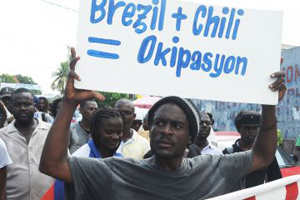
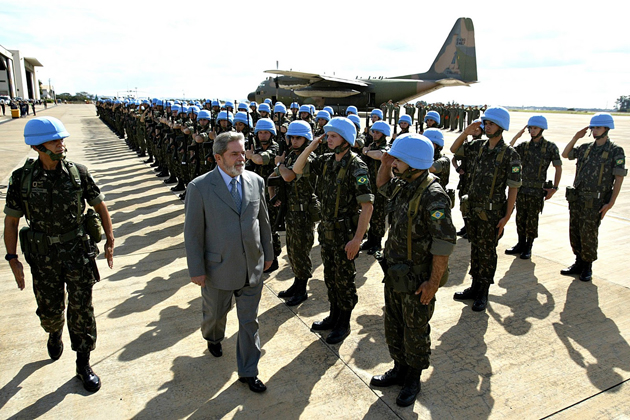

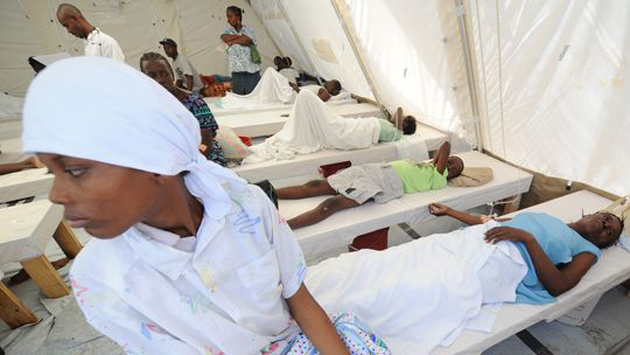
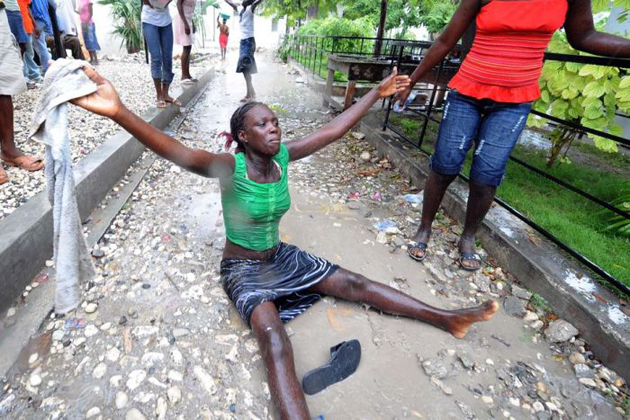
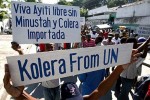
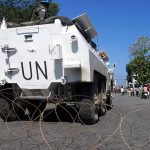


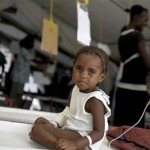

Comments
MINUSTAH’s Cholera Kleptocracy Prepares to Stay in Haiti | Cleptocracia do Cólera da MINUSTAH Prepara-se Para Ficar no Haiti — No Comments